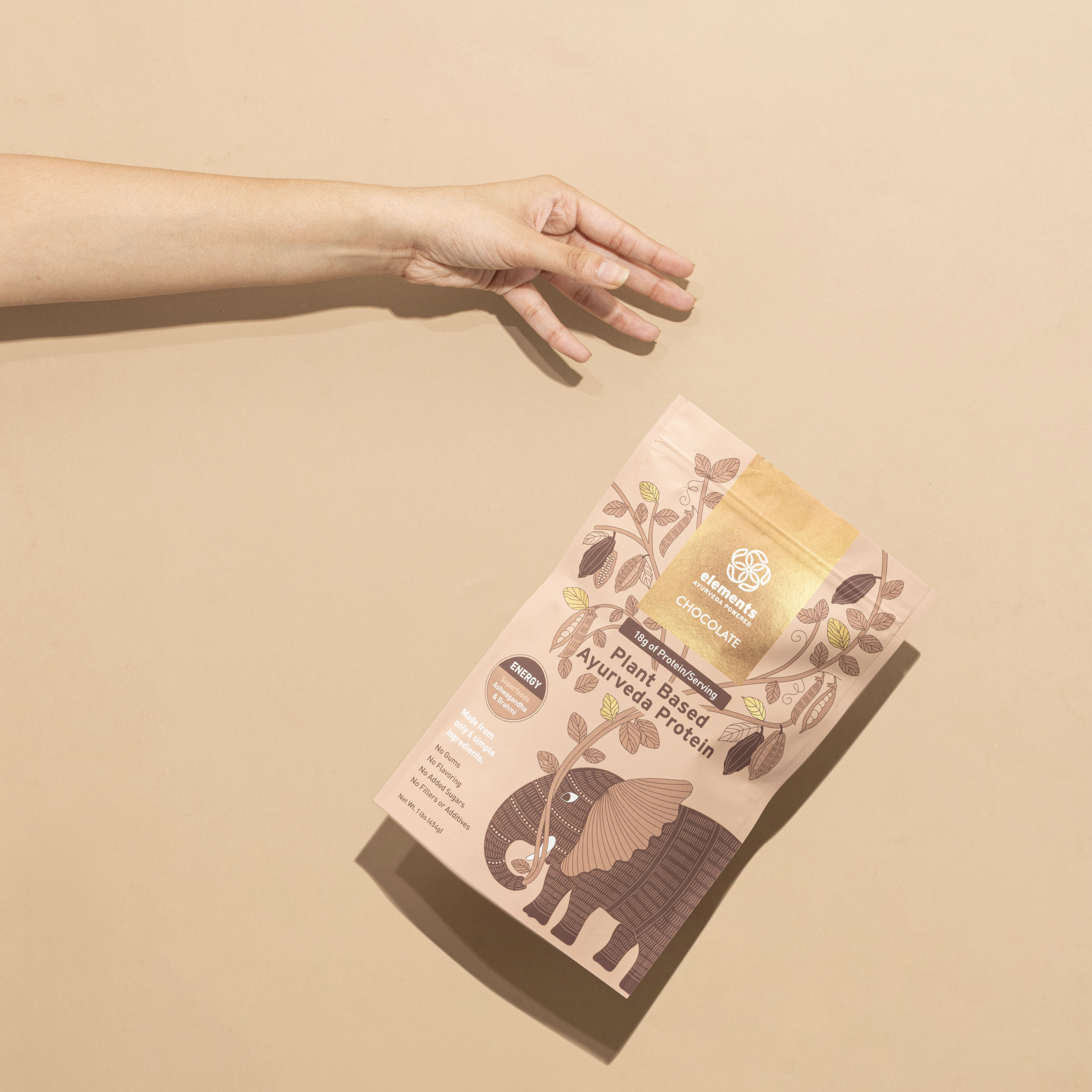
Is your Cacao tested for Heavy Metals like Lead, Cadmium, Mercury and Arsenic?
Is your Cacao tested for Heavy Metals like Lead, Cadmium, Mercury and Arsenic?
“Sometimes I'm told that my job is to ruin things that people like ...” this is what Kevin Loria from ConsumerReports.org shared as he created some waves in the chocolate universe by publishing a report titled “Lead and Cadmium Could Be in Your Dark Chocolate.”
Some of the most admired and popular products were flagged in this writeup.
While we were not included in the 28 bars tested for report, our phones started ringing off the hook and every third email in our inbox was asking us whether their most loved chocolate had lead (Pb) and cadmium (Cd) in them. Rightly so! Many of our customers even asked us to publish our lab test reports on our website! After all, if you have nothing to hide, you should have no fear of being held accountable – they implied.
Hence, we decided to open the doors and let you in. All the way to the molecular level of cacao ingredients in our lovingly crafted chocolate bars!
But before we get too technical, a short summary: Our cacao is free from Lead. We also regularly test for Mercury and Arsenic. We have none of them either. There is trace Cadmium in the cacao per our periodic testing (the last report came from labs in Feb 2023) yet our end products are below the Prop 65 approved thresholds. In other words, if we were tested in the Consumer Report, we would have passed on both counts. Read on for more technical details.
Lead:
Lead gets in the food in several ways but let’s address two main contributors:
Natural sources: Lead occurs naturally in the earth's crust and can be released into the environment through erosion, weathering of rocks and minerals, and volcanic activity.
Human activities: Human activities such as industrial processes, mining, smelting, and the use of leaded gasoline and paints can release lead into the environment. Fumes from the lead content in gasoline settle on the surface of the earth and eventually get into our food. Another source of lead is from the likes of Dusty the Crophopper! Remember him from the movie Planes? These crop dusters fly too close to the earth and the contents of the exhaust fumes find a way to percolate the ground via precipitation.
Our farms are in the country where the lead content has been banned from fuel many years ago. There are no crop dusters in the air either! In short, the soil is pretty much free from lead. If you look at the lab reports, it reads:

Testing machine could not find any lead content but the reporting standards do not have a category of 0. Hence, they have to say – it’s less than 0.05mg/kg - in its lowest category.
As per the ConsumerReports.org’s report, California's maximum allowable dose level (MADL) for lead is 0.5 micrograms.
Cadmium
Cadmium is a natural element in the earth's crust. And according to CDC, it is usually found as a mineral combined with other elements such as oxygen, chlorine, or sulfur.
You’ve probably heard of Codex Alimentarius. It is a set of international food standards, guidelines, and codes of practice established by the Food and Agriculture Organization of the United Nations (FAO) and the World Health Organization (WHO) to ensure the safety and quality of food.
Regarding cadmium, the Codex Alimentarius Commission has established maximum levels for cadmium in certain food products. For example, the maximum level of cadmium in rice is 0.4 mg/kg, while the maximum level in cocoa beans is 0.6 mg/kg. According to Prop 65 in the US, the maximum allowable daily level (MADL) for cadmium exposure by the oral route is 4.1 microgram/day. These are California's maximum allowable dose level.
Our lab test results for Cacao mass came in as:

Bottom line: There is cadmium in our cacao but it’s below the Prop 65 standards (that the research is using) and also below the Codex Alimentarius standards.
Is the overall issue a matter of concern?
When looking at it from the point of view of global food eco-system, yes it is. But singling out cacao and writing it off as a major source of Cadmium is an uninformed knee-jerk reaction.
You see, most soil and rocks, including coal and mineral fertilizers, contain some cadmium. What we have learned over a period of time is that you can remediate and mitigate but you can NOT avoid. Just like most soils, most foods also contain Cadmium.
It is everywhere – in your spinach and bananas, cereal and rice.
We are not saying this – research is. And we have a few resources for your weekend reading (towards the end)
Research also establishes that the only way to fix this is by remediating the pH of the soil. While we remain cautious and commit to keep testing our batches periodically, we have also committed to work with farmers on cost effective ways to increase the soil pH and hence by making it more alkaline. We’ll share more details at a later point.
Mercury:
Mercury can also enter soil through both, natural and human-caused processes.
Natural sources: Mercury from earth's crust can be released into the environment through volcanic activity, erosion, and weathering of rocks and minerals containing mercury. Mercury can also be present in soils and sediments in wetlands and other areas where organic matter decomposes.
Human activities: Human activities such as coal-fired power generation, mining, smelting, and waste incineration can release mercury into the environment.
Fortunately, our farmlands are not affected by any of these and hence the mercury level is not relevant as per the reports.

Once again, the testing machine could not find any mercury content and again the reporting standards do not have a category of 0. Hence, they have to say - less than 0.005mg/kg – in its lowest category.
Arsenic:
Natural Sources: The Earth’s crust is an abundant natural source of arsenic. It is present in more than 200 different minerals. Did you know that about one-third of the arsenic in the Earth’s atmosphere is of natural origin? Volcanic action is the most important natural source.
Human Activities: Arsenic in soil also results from human activities including pesticide use, mining and ore processing operations, operating coal burning power plants, and waste disposal. Sites of former tanneries, which make leather from animal hides, have large amounts of arsenic in the soil.
While Ecuador is known for its fair share of volcanoes, our farmlands are far away from volcanic mountains and remain unaffected by the causes listed above. The arsenic level is not relevant as per the reports.
The testing machine could not find any arsenic content. Once again, the reporting standards do not have a category of 0. And so, they have to say - less than 0.04mg/kg – in its lowest category.

Conclusion:
We feel good that there is practically no lead, arsenic or mercury in our cacao. There is trace cadmium in our cacao – and we are pleased that its below accepted thresholds of California Prop 65 or Codex Alimentarius. We are not popping non-alcoholic bubbly to celebrate that. We remain cautious, testing soil conditions every so often and also working with farmers to improve the overall soil conditions as recommended by scientists. It is not just about cacao. Heavy metals are in everything we eat – more or less. But it is more awareness and practical approach that will help farmers and consumers alike.
We sleep peacefully at night while being grateful for the opportunity to be doing what we love and doing it right.
Here are our latest lab reports for anyone to look at.
If you have any questions or need more clarity, please write to us on we@elementstruffles.com
Alak & Kushal, Co-Founders, Elements
Some research and resources that you might find as useful as we did:
https://journals.plos.org/plosone/article?id=10.1371/journal.pone.0261989
https://www.cdc.gov/biomonitoring/Cadmium_FactSheet.html
https://thechocolatelife.com/cadmium-in-chocolate/
https://www.degruyter.com/document/doi/10.1515/pac-2016-0910/html
https://link.springer.com/article/10.1007/s11356-016-6931-7
https://www.sciencedirect.com/science/article/abs/pii/S0048969717321411?via%3Dihub
https://oehha.ca.gov/media/downloads/crnr/cadmium20madl.pdf





